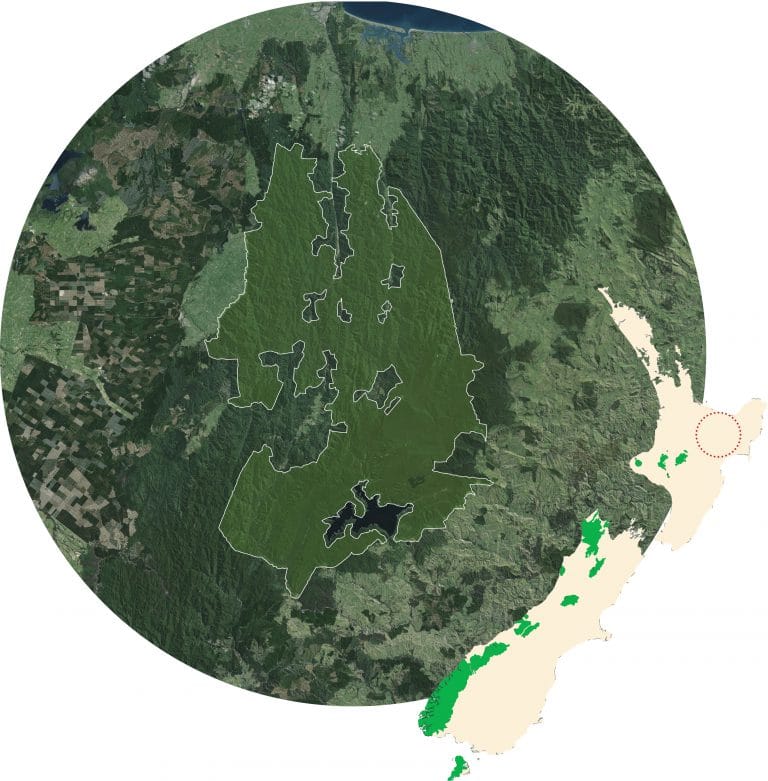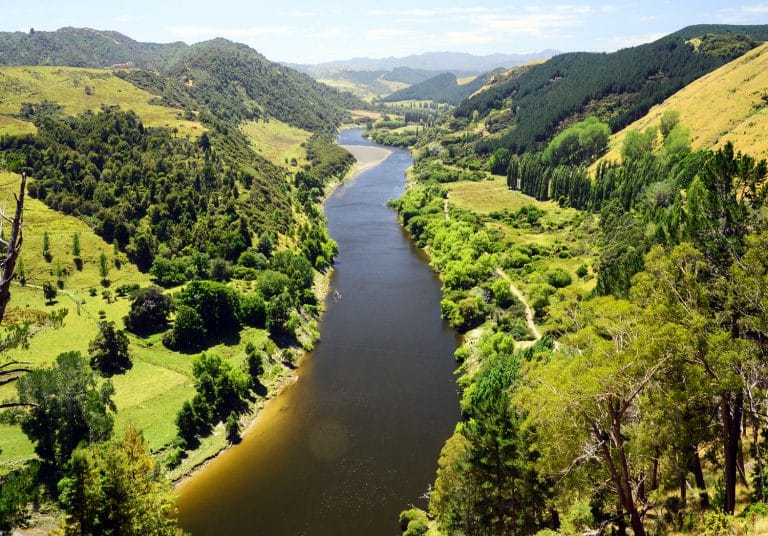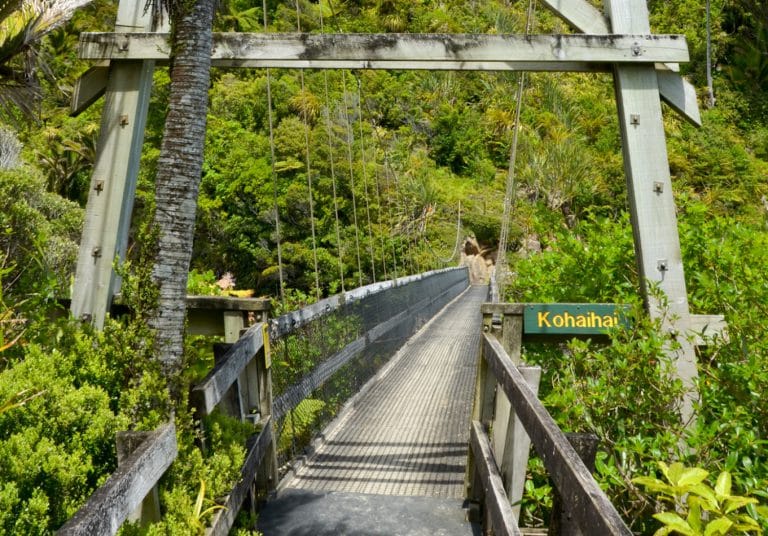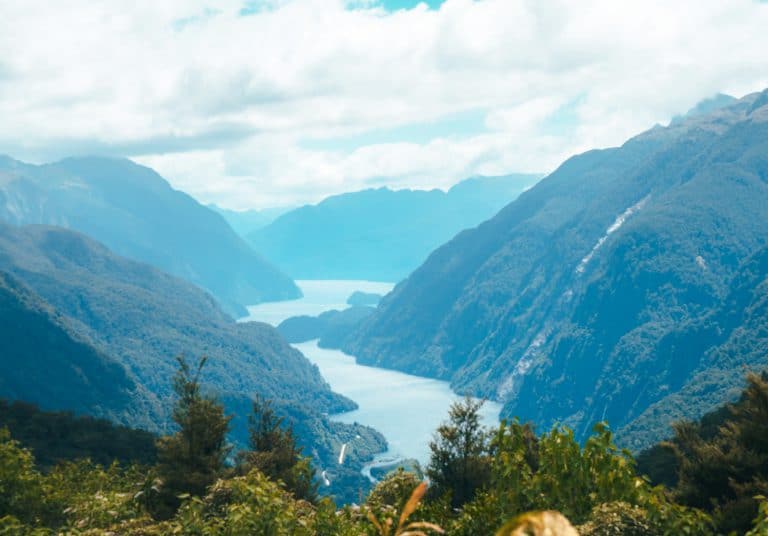The Whanganui River is an ever-present life force for the North Island of New Zealand. Of great historic importance, the river is one of the most culturally significant bodies of water in the country. Maori of Whanganui iwi have long believed that the river is…
Urewera Mural
One of the New Zealand’s most notable artists was inspired to paint the now famous Urewera Mural. The painting, worth $2m, was stolen in 1997 by Tuhoe activists, but after much discussion was returned many months later and put back on display.
Urewera Mural, 1976 - Image © Colin McCahon, Department of Conservation/Ngai Tuhoe




